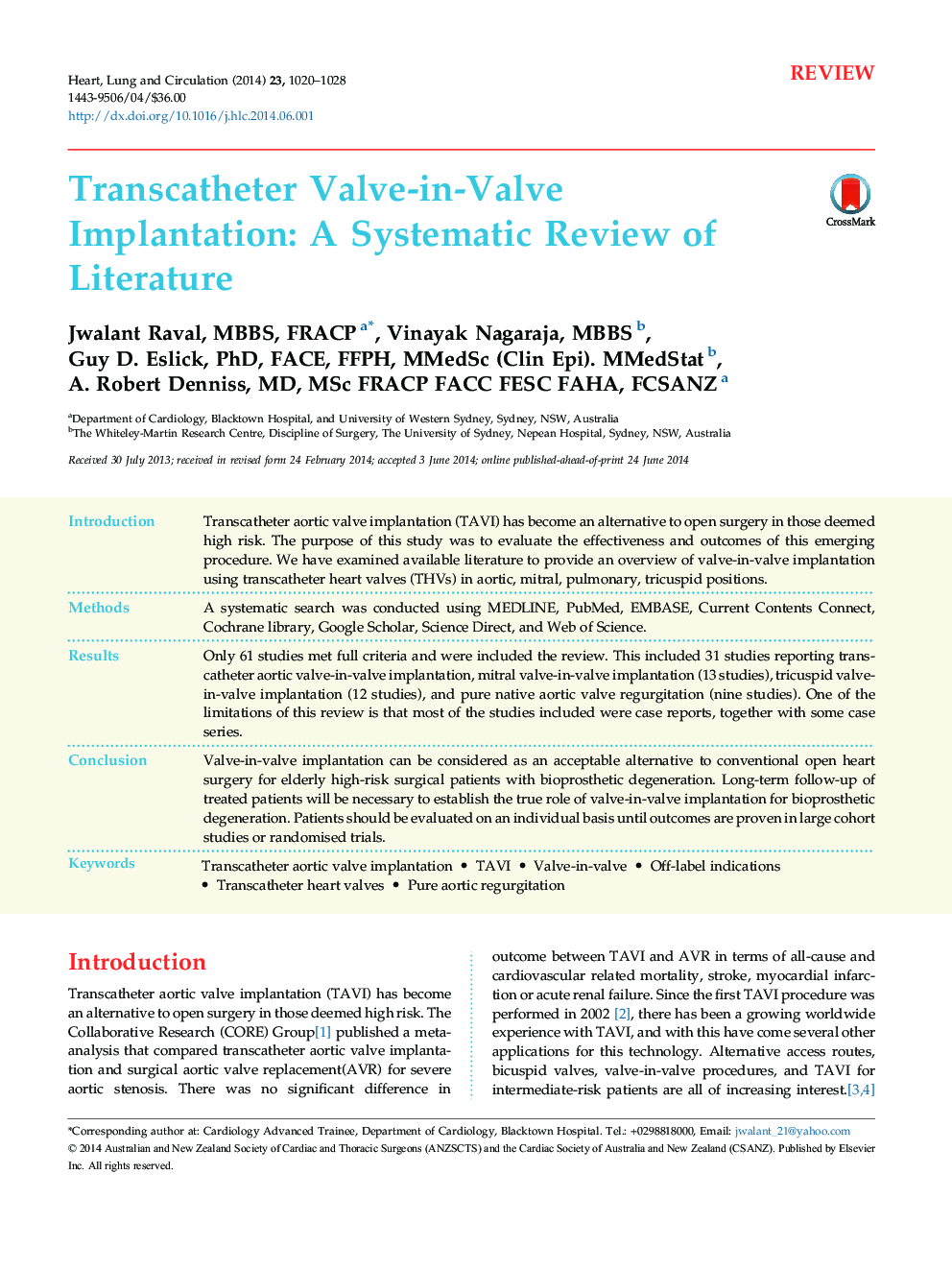| Article ID | Journal | Published Year | Pages | File Type |
|---|---|---|---|---|
| 2917077 | Heart, Lung and Circulation | 2014 | 9 Pages |
IntroductionTranscatheter aortic valve implantation (TAVI) has become an alternative to open surgery in those deemed high risk. The purpose of this study was to evaluate the effectiveness and outcomes of this emerging procedure. We have examined available literature to provide an overview of valve-in-valve implantation using transcatheter heart valves (THVs) in aortic, mitral, pulmonary, tricuspid positions.MethodsA systematic search was conducted using MEDLINE, PubMed, EMBASE, Current Contents Connect, Cochrane library, Google Scholar, Science Direct, and Web of Science.ResultsOnly 61 studies met full criteria and were included the review. This included 31 studies reporting transcatheter aortic valve-in-valve implantation, mitral valve-in-valve implantation (13 studies), tricuspid valve-in-valve implantation (12 studies), and pure native aortic valve regurgitation (nine studies). One of the limitations of this review is that most of the studies included were case reports, together with some case series.ConclusionValve-in-valve implantation can be considered as an acceptable alternative to conventional open heart surgery for elderly high-risk surgical patients with bioprosthetic degeneration. Long-term follow-up of treated patients will be necessary to establish the true role of valve-in-valve implantation for bioprosthetic degeneration. Patients should be evaluated on an individual basis until outcomes are proven in large cohort studies or randomised trials.
